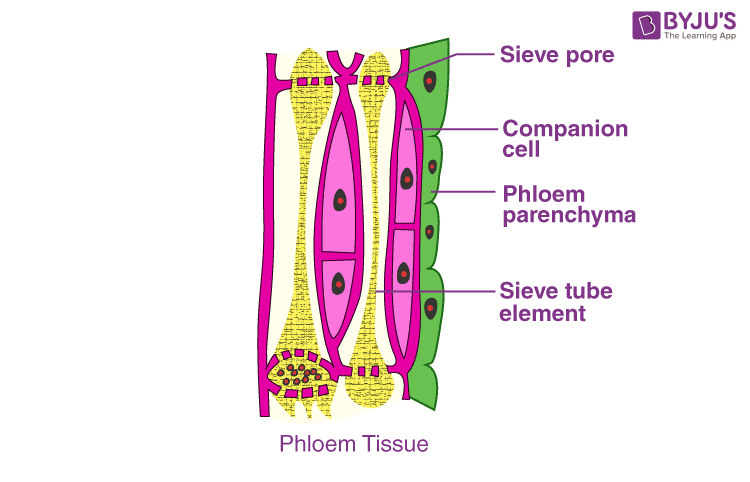What is Phloem?
Phloem is a living vascular tissue that is found in vascular plants and is responsible for transporting food prepared in the leaves (during photosynthesis) to all the parts of the plant. This whole process of transportation is known as phloem translocation.
Below is a simple and well-labelled diagram of phloem tissue with all its components explained.
Well-Labelled Diagram of Phloem Tissue

Structure of the Phloem Tissue
- The phloem is composed of three types of cells – the conducting cells, the parenchyma cells and the supportive cells.
- The conducting cells, also called sieve elements, are composed of columns of sieve tube cells that have perforations in their lateral walls and that helps in the conduction of food throughout the plant.
- All the sieve elements have sieve pores at the end that helps in connecting one sieve element to another. It is a critical structure for phloem function.
- The parenchyma consists of unspecialised cells used for storage and two specialised cells namely – companion cells and albuminous cells.
- The companion cells, as the name suggests are the companion of the sieve tube cells that help in carrying out the metabolic functioning of the sieve elements.
- The companion cells are connected with the sieve tube elements by plasmodesmata.
- The albuminous cells are analogous to companion cells that are only found in non-flowering vascular plants.
- The supportive cells are sclerenchymatous cells namely – fibres and sclereids.
- Both the cells have secondary cell walls that make them rigid and give them a high tensile strength. They are mainly present for mechanical and supportive functions.
Keep visiting BYJU’S Biology for more such information.
Also Read:

Comments